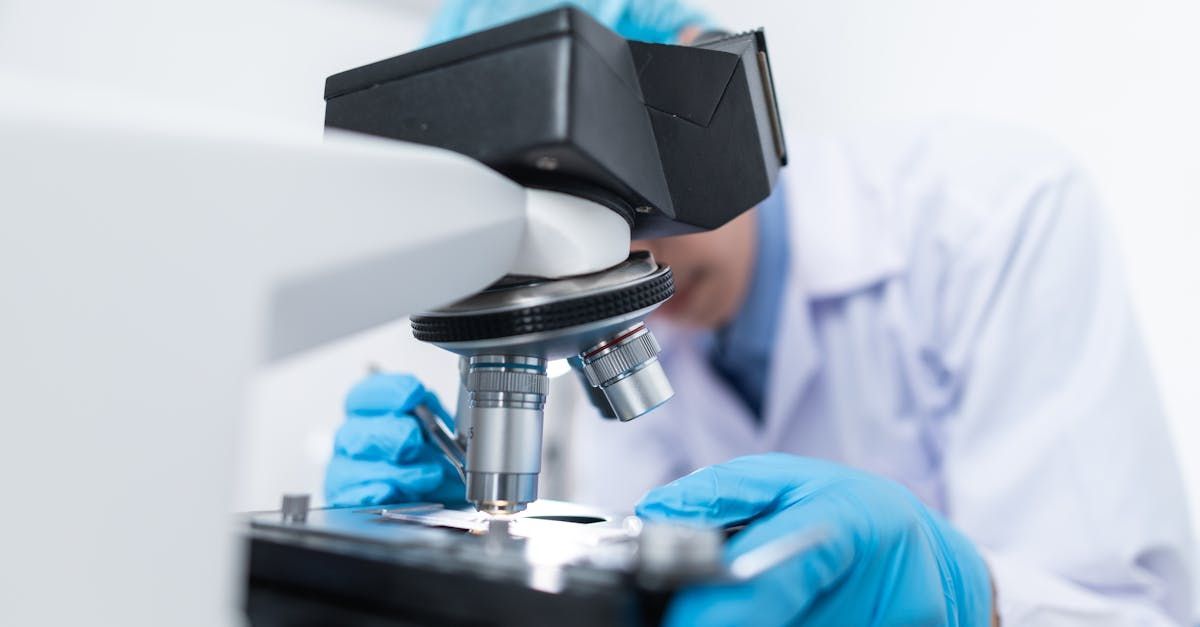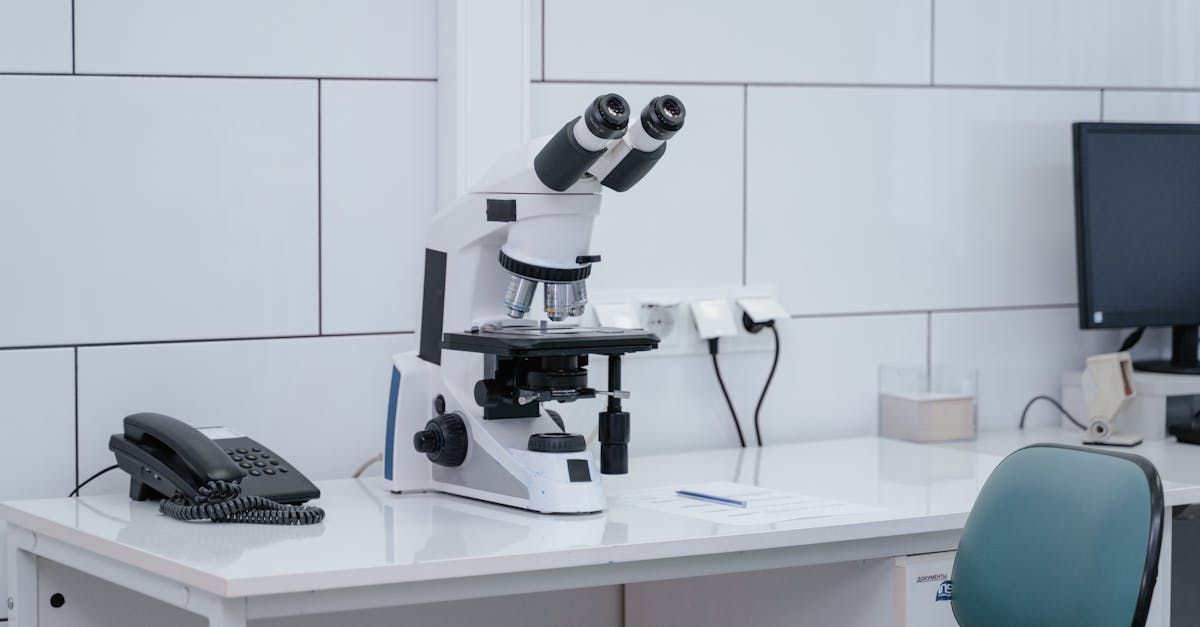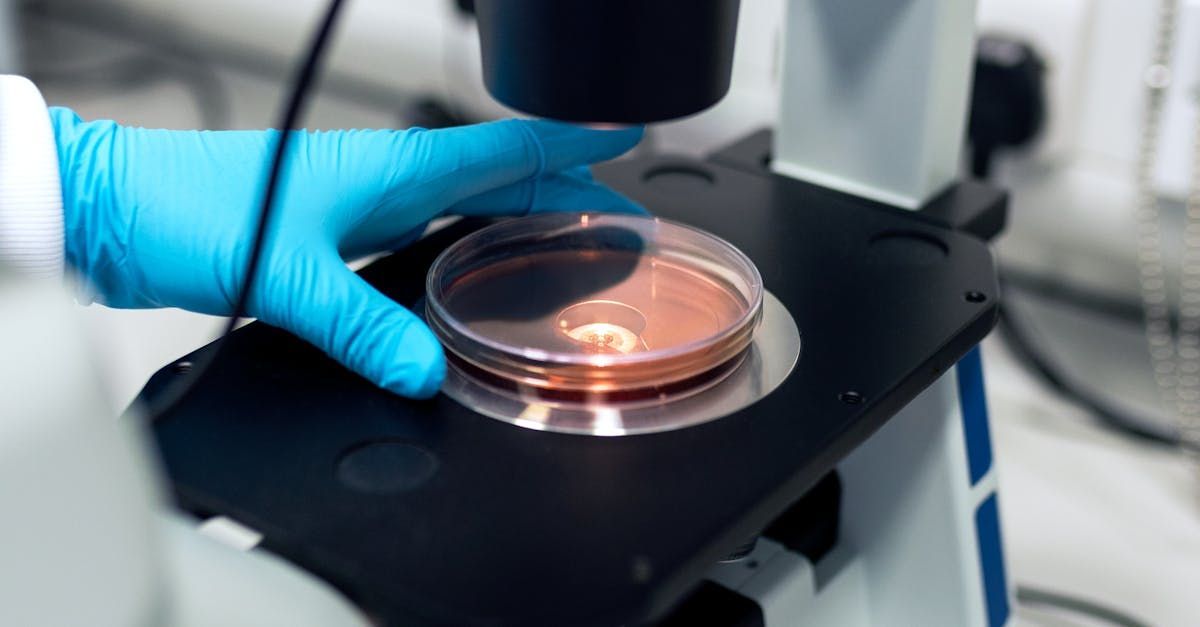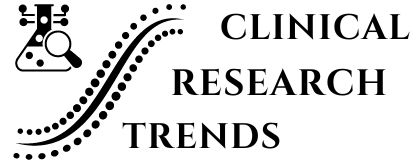The Role of Biostatistics in Modern Clinical Research
Clinical research is the cornerstone of medical science, driving the discovery of new treatments, enhancing our understanding of diseases, and improving patient outcomes. As the healthcare landscape evolves, the methods and technologies employed in clinical research must adapt to ensure accuracy, reliability, and efficacy. One critical component in this evolving landscape is biostatistics—a field that integrates statistical principles into the design, analysis, and interpretation of clinical research data.
Biostatistics serves as the backbone of clinical research, offering the tools necessary to transform raw data into meaningful insights. It helps researchers identify patterns, make predictions, and validate findings, ensuring that medical advancements are grounded in robust scientific evidence. Without biostatistics, the vast amounts of data generated in clinical trials would be challenging to interpret, potentially leading to erroneous conclusions and hindered progress in medical science.
This blog aims to explore the essential role of biostatistics in modern clinical research. We will delve into its fundamental principles, examine its application in various phases of clinical trials, and discuss how biostatistical methods enhance the credibility and precision of research findings. By understanding the significance of biostatistics, we can better appreciate its impact on the development of new therapies and the overall advancement of healthcare.
Understanding Biostatistics
Biostatistics is a specialized branch of statistics that applies statistical methods to biological and medical research. It encompasses the design of experiments, the collection and analysis of data, and the interpretation and presentation of results. The core principles of biostatistics revolve around the rigorous application of statistical techniques to ensure that research findings are valid, reliable, and reproducible.
Historical Context: The Evolution of Biostatistics in Medical Research
The roots of biostatistics can be traced back to the early 20th century when statistical methods began to be applied to biological and medical questions. One of the pivotal figures in the development of biostatistics was Ronald A. Fisher, whose work on experimental design and analysis of variance laid the foundation for modern statistical methods in research. Over the decades, biostatistics has evolved, incorporating advances in technology and computational methods to handle increasingly complex datasets.
In the mid-20th century, the advent of computers revolutionized biostatistics, allowing for more sophisticated data analysis and modeling. The integration of biostatistics into clinical trials became more pronounced, with standardized methods for hypothesis testing, sample size determination, and data interpretation being established. Today, biostatistics is an integral part of clinical research, ensuring that studies are designed effectively and results are interpreted accurately.
Key Concepts and Terminology
Understanding biostatistics involves familiarity with several key concepts and terminology. Some of the fundamental terms include:
- Hypothesis Testing: A method used to determine whether there is enough statistical evidence to support a specific hypothesis. It involves comparing observed data to what would be expected under a null hypothesis (no effect or no difference) and determining the likelihood of observing such data if the null hypothesis were true.
- P-values: A p-value is a measure of the probability that the observed results occurred by chance. A low p-value (typically less than 0.05) indicates that the observed effect is statistically significant and unlikely to have occurred by chance alone.
- Confidence Intervals: A confidence interval provides a range of values within which the true effect or parameter is expected to lie, with a certain level of confidence (usually 95%). It offers a measure of the precision of an estimate and helps to convey the uncertainty associated with sample data.
- Sample Size: The number of participants or observations included in a study. Determining an appropriate sample size is crucial for ensuring that the study has enough power to detect a meaningful effect and to generalize the findings to a broader population.
- Randomization: A process used to assign participants to different groups in a study randomly. Randomization helps to eliminate bias and ensures that the groups are comparable at the start of the trial.
By mastering these concepts, researchers can design robust studies, analyze data appropriately, and draw valid conclusions from their research findings. Biostatistics not only enhances the credibility of clinical research but also contributes to the overall advancement of medical science by providing a solid foundation for evidence-based practices.
The Importance of Biostatistics in Clinical Research
Ensuring Scientific Rigor and Validity of Clinical Trials
Biostatistics is pivotal in maintaining the scientific rigor and validity of clinical trials. By applying statistical principles to the design and analysis of studies, biostatisticians help ensure that the research is methodologically sound and that the findings are credible. This involves careful planning of the study design, including the selection of appropriate endpoints, determination of sample sizes, and implementation of randomization techniques to minimize bias.
Statistical methods are used to control for confounding variables and to ensure that the results are attributable to the interventions being tested rather than external factors. This rigorous approach is essential for generating reliable evidence that can inform clinical practice and guide healthcare decision-making.
Designing Robust and Effective Study Protocols
A well-designed study protocol is the backbone of any clinical trial, and biostatistics plays a critical role in this process. Biostatisticians collaborate with clinical researchers to develop protocols that clearly define the study objectives, hypotheses, and endpoints. They determine the appropriate sample size needed to achieve sufficient statistical power, ensuring that the study can detect meaningful differences or effects if they exist.
Additionally, biostatistics guides the selection of appropriate study designs, whether it be randomized controlled trials (RCTs), cohort studies, case-control studies, or other designs suited to the research question. By meticulously planning the study protocol, biostatisticians help maximize the reliability and interpretability of the study outcomes, ultimately contributing to the advancement of medical knowledge.
Analyzing and Interpreting Clinical Data Accurately
The accurate analysis and interpretation of clinical data are fundamental to the success of clinical research, and biostatistics provides the tools and methodologies necessary for this task. Biostatisticians employ various statistical techniques to analyze data, ranging from simple descriptive statistics to complex multivariate analyses. These analyses help uncover patterns, relationships, and trends within the data, providing insights into the efficacy and safety of medical interventions.
One key aspect of data analysis in clinical research is hypothesis testing, where biostatisticians determine whether the observed effects are statistically significant or could have occurred by chance. The use of p-values and confidence intervals helps quantify the uncertainty associated with the results, allowing researchers to make informed conclusions about the study findings.
Biostatistics also plays a vital role in interpreting the results in the context of the study design and the broader scientific literature. By ensuring that the data are analyzed correctly and that the conclusions drawn are valid, biostatisticians help prevent misleading or erroneous interpretations that could have significant implications for patient care and public health.
In summary, biostatistics is indispensable in clinical research, providing the framework for designing robust studies, ensuring scientific rigor, and accurately analyzing and interpreting data. Its role in clinical research is critical for advancing medical science and improving healthcare outcomes, highlighting the importance of biostatistics in the continuous pursuit of knowledge and innovation in the medical field.
Key Roles of Biostatistics in Clinical Research
Study Design and Planning
Determining Sample Size and Power Calculations
One of the critical tasks in clinical research is determining the appropriate sample size for a study. Biostatisticians use power calculations to ensure that the study is sufficiently powered to detect a clinically meaningful effect if it exists. These calculations take into account the expected effect size, variability in the data, and the desired level of statistical significance. An adequately powered study reduces the risk of Type II errors (failing to detect a true effect) and enhances the reliability of the findings.
Selecting Appropriate Study Designs
The choice of study design is pivotal to addressing the research question effectively. Biostatisticians help select the most suitable design, whether it be randomized controlled trials (RCTs), cohort studies, case-control studies, or other designs. Each design has its strengths and limitations, and the selection depends on the research objectives, available resources, and ethical considerations. For example, RCTs are considered the gold standard for evaluating interventions due to their ability to minimize bias, but they may not always be feasible or ethical.
Developing Randomization Schemes and Blinding Methods
Randomization and blinding are essential components of clinical trial design to reduce bias and ensure the validity of the results. Biostatisticians develop randomization schemes that allocate participants to different study arms in a manner that is both random and reproducible. They also design blinding methods to ensure that participants, investigators, and sometimes even data analysts are unaware of the group assignments, which helps prevent bias in the treatment administration and outcome assessment.
Data Collection and Management
Designing Data Collection Instruments and Databases
The accuracy and completeness of data collection are crucial for the integrity of clinical research. Biostatisticians collaborate with researchers to design data collection instruments, such as case report forms (CRFs) and electronic databases, that capture all necessary information efficiently and accurately. These instruments must be user-friendly, reduce the potential for data entry errors, and facilitate the collection of high-quality data.
Ensuring Data Quality and Integrity
Maintaining data quality and integrity throughout the study is a primary concern. Biostatisticians implement strategies for data validation, consistency checks, and error detection to ensure the reliability of the data. This includes regular monitoring and auditing of data entries to identify and correct discrepancies promptly.
Implementing Data Monitoring and Interim Analysis Plans
Ongoing monitoring of data is essential to ensure participant safety and the integrity of the study. Biostatisticians develop data monitoring plans that include predefined criteria for interim analyses. These analyses are conducted at specific points during the study to assess the data's integrity, review safety outcomes, and make recommendations about the continuation or modification of the trial. Interim analyses help detect any emerging issues early and allow for timely interventions.
Statistical Analysis and Interpretation
Performing Descriptive and Inferential Statistical Analyses
Biostatisticians perform a range of statistical analyses to summarize the data and test hypotheses. Descriptive statistics provide an overview of the data, including measures of central tendency and variability. Inferential statistics, such as t-tests, chi-square tests, and regression analyses, are used to make inferences about the population based on the sample data. These analyses help determine the significance and clinical relevance of the findings.
Interpreting Statistical Results and Drawing Valid Conclusions
Interpreting the results of statistical analyses is a nuanced task that requires expertise. Biostatisticians help researchers understand the implications of their findings, considering both statistical significance and clinical relevance. They ensure that the conclusions drawn are valid and supported by the data, avoiding over-interpretation or misrepresentation of the results.
Addressing Potential Biases and Confounding Factors
Biases and confounding factors can distort the results of a study and lead to incorrect conclusions. Biostatisticians identify and address these issues through careful study design, appropriate statistical adjustments, and sensitivity analyses. By controlling for potential biases and confounders, they help ensure that the study results are accurate and credible.
Regulatory Submissions and Reporting
Preparing Statistical Sections for Regulatory Submissions
Regulatory submissions, such as those to the FDA or EMA, require detailed statistical documentation. Biostatisticians prepare the statistical sections of these submissions, including the analysis plan, results, and interpretation. They ensure that the submissions comply with regulatory guidelines and standards, providing a clear and comprehensive account of the statistical methods and findings.
Ensuring Compliance with Regulatory Guidelines and Standards
Compliance with regulatory guidelines is essential for the approval and credibility of clinical research. Biostatisticians stay abreast of the latest regulations and ensure that the study design, data analysis, and reporting meet all necessary standards. This includes adherence to Good Clinical Practice (GCP) guidelines and other relevant regulatory requirements.
Presenting Findings in Scientific Publications and Conferences
Communicating the results of clinical research to the scientific community is a key aspect of advancing medical knowledge. Biostatisticians collaborate with researchers to present their findings in scientific publications and at conferences. They ensure that the statistical methods and results are clearly and accurately described, enabling other researchers to evaluate and build upon the work.
In summary, biostatistics is integral to every stage of clinical research, from study design and data collection to analysis and reporting. Its role in ensuring the scientific rigor, validity, and reliability of research findings is indispensable, highlighting the critical importance of biostatistics in the advancement of medical science and healthcare.
Advanced Statistical Methods in Modern Clinical Research
Bayesian Statistics
Overview and Applications in Clinical Trials
Bayesian statistics is an advanced statistical methodology that incorporates prior knowledge or beliefs into the analysis alongside current data. This approach contrasts with traditional frequentist methods, which rely solely on the data collected from the current study. Bayesian methods provide a probabilistic framework for updating the probability of a hypothesis as new data becomes available. In clinical trials, Bayesian statistics can be used to continuously update the probability of treatment efficacy and safety as data accumulates, offering a dynamic and flexible approach to data analysis.
Advantages of Bayesian Methods Over Traditional Approaches
One of the primary advantages of Bayesian methods is their ability to incorporate prior information, which can be particularly valuable in early-phase clinical trials or rare disease research where data may be sparse. Bayesian approaches also allow for more intuitive interpretation of results, as they provide direct probabilities of hypotheses. Furthermore, Bayesian methods are well-suited for adaptive trial designs, enabling real-time decision-making based on accumulating data. This can lead to more efficient and ethical trials, potentially reducing the number of participants exposed to less effective treatments.
Machine Learning and Artificial Intelligence
Integration of ML and AI in Biostatistical Analysis
The integration of machine learning (ML) and artificial intelligence (AI) into biostatistical analysis represents a significant advancement in clinical research. ML and AI techniques can handle large, complex datasets and uncover patterns that traditional statistical methods might miss. These technologies are particularly powerful in predictive modeling, where they can identify variables and interactions that contribute to patient outcomes. By leveraging ML and AI, biostatisticians can enhance the accuracy and predictive power of their analyses.
Examples of AI-Driven Predictive Modeling and Data Analysis
AI-driven predictive modeling has numerous applications in clinical research. For instance, ML algorithms can predict patient responses to treatments based on genetic, demographic, and clinical data. AI can also be used to identify potential adverse events early by analyzing patient data in real-time. Additionally, deep learning models, a subset of ML, can analyze medical images to assist in the diagnosis and treatment planning for various conditions. These AI-driven approaches not only improve the precision of clinical trials but also contribute to personalized medicine by tailoring treatments to individual patients.
Adaptive Trial Designs
Concept and Benefits of Adaptive Designs
Adaptive trial designs allow for modifications to the trial procedures based on interim data analyses without compromising the integrity and validity of the study. These modifications can include changes in sample size, dosing regimens, or even the addition or removal of treatment arms. The primary benefit of adaptive designs is their flexibility, which can make clinical trials more efficient and ethical. They enable quicker decision-making, potentially bringing effective treatments to patients faster and reducing exposure to ineffective or harmful interventions.
Role of Biostatistics in Planning and Implementing Adaptive Trials
Biostatistics is crucial in the planning and implementation of adaptive trials. Biostatisticians develop the adaptive design framework, including defining the criteria for interim analyses and decision rules for trial modifications. They ensure that these designs maintain statistical rigor and validity, accounting for potential biases and maintaining control over Type I error rates. During the trial, biostatisticians continuously monitor data and perform interim analyses to guide the adaptive process. Their expertise ensures that the trial remains scientifically robust and that any adaptations are based on sound statistical evidence.
In conclusion, advanced statistical methods such as Bayesian statistics, machine learning, artificial intelligence, and adaptive trial designs are revolutionizing modern clinical research. These approaches enhance the efficiency, flexibility, and precision of clinical trials, ultimately leading to more robust and reliable findings. As the field of biostatistics continues to evolve, its integration with cutting-edge technologies will further drive innovation in medical science and improve healthcare outcomes.
Challenges and Considerations in Biostatistics
Data Complexity and Volume
Managing and Analyzing Large Datasets (Big Data)
The advent of big data in clinical research presents both opportunities and challenges for biostatisticians. Large datasets, such as those generated by electronic health records (EHRs), genomics, and wearable devices, offer a wealth of information that can drive novel insights and improve patient outcomes. However, managing and analyzing these vast datasets requires advanced computational tools and methods. Biostatisticians must be adept at using high-performance computing resources and sophisticated algorithms to process, clean, and analyze big data. Ensuring that analyses are both accurate and efficient in the context of big data is a significant challenge that requires continuous innovation in statistical methodologies and software.
Addressing Missing Data and Ensuring Data Completeness
Missing data is a common issue in clinical research that can lead to biased results and reduced statistical power if not properly addressed. Biostatisticians employ various techniques to handle missing data, such as imputation methods that estimate and replace missing values based on the available data. Ensuring data completeness is also crucial, requiring rigorous data collection protocols and ongoing data quality assessments. The challenge lies in balancing the need for comprehensive data collection with the practical constraints of clinical research, such as patient drop-out and data entry errors.
Ethical and Regulatory Issues
Ensuring Ethical Considerations in Data Analysis and Reporting
Ethical considerations are paramount in biostatistics, as the analysis and interpretation of data can have profound implications for patient care and public health. Biostatisticians must adhere to ethical principles, such as transparency, integrity, and respect for patient confidentiality. This includes avoiding data manipulation or selective reporting of results, which can mislead stakeholders and harm patients. Ethical data analysis also involves ensuring that all statistical methods are applied appropriately and that results are presented honestly, with clear acknowledgment of any limitations.
Adhering to Regulatory Requirements and Standards
Compliance with regulatory requirements is essential for the credibility and approval of clinical research. Regulatory agencies such as the FDA and EMA have stringent guidelines for the conduct, analysis, and reporting of clinical trials. Biostatisticians must be well-versed in these regulations to ensure that their analyses meet all necessary standards. This involves rigorous documentation of statistical methods, adherence to Good Clinical Practice (GCP) guidelines, and thorough preparation of statistical sections for regulatory submissions. Staying current with evolving regulations and standards is a continuous challenge that requires ongoing education and adaptation.
Communication and Collaboration
Effectively Communicating Statistical Concepts to Non-Statisticians
One of the key challenges for biostatisticians is effectively communicating complex statistical concepts to non-statisticians, including clinicians, researchers, and decision-makers. Clear and concise communication is essential to ensure that the findings of statistical analyses are understood and appropriately applied. This involves translating technical jargon into accessible language, using visual aids such as graphs and charts to illustrate key points, and providing context for the significance of the results. Effective communication helps bridge the gap between statistical analysis and practical application, facilitating informed decision-making in clinical research.
Collaborating with Multidisciplinary Teams
Clinical research is inherently multidisciplinary, involving collaboration among biostatisticians, clinicians, researchers, and regulators. Successful collaboration requires biostatisticians to not only possess strong technical skills but also the ability to work effectively in diverse teams. This involves understanding the perspectives and expertise of different team members, contributing to the design and conduct of studies, and providing statistical insights that inform the research process. Effective collaboration enhances the quality and impact of clinical research, ensuring that statistical methods are integrated seamlessly into the broader research framework.
In conclusion, biostatistics plays a critical role in modern clinical research, but it also faces significant challenges and considerations. Managing complex and voluminous data, addressing ethical and regulatory issues, and ensuring effective communication and collaboration are all essential for the successful application of biostatistics. By navigating these challenges, biostatisticians contribute to the advancement of medical science and the improvement of healthcare outcomes, reinforcing the indispensable nature of their work in clinical research.
Case Studies and Success Stories
Biostatistics has been instrumental in the success of numerous clinical research studies, highlighting its critical role in advancing medical science. Here, we present three case studies that showcase how biostatistical methods have been applied to achieve significant outcomes in clinical trials.
Case Study 1: Biostatistical Analysis in a Landmark Cardiovascular Trial
A landmark cardiovascular trial aimed to evaluate the efficacy of a new drug in reducing the incidence of heart attacks and strokes in high-risk patients. The trial enrolled over 10,000 participants and was designed as a randomized controlled trial (RCT).
Role of Biostatistics:
- Sample Size and Power Calculations: Biostatisticians determined the sample size required to detect a clinically meaningful difference in cardiovascular events between the treatment and control groups.
- Randomization and Blinding: A robust randomization scheme was implemented to ensure unbiased allocation of participants, and blinding methods were used to prevent bias in outcome assessment.
- Data Analysis: Advanced statistical techniques, including survival analysis and Cox proportional hazards models, were employed to analyze the time-to-event data. These methods allowed researchers to account for various confounding factors and accurately estimate the treatment effect.
- Interim Analysis: Predefined interim analyses were conducted to monitor the safety and efficacy of the treatment, ensuring the trial could be adjusted or stopped early if necessary.
The trial's results demonstrated a significant reduction in cardiovascular events among participants receiving the new drug, leading to its approval and widespread use in clinical practice.
Case Study 2: Using Bayesian Methods in Oncology Research
In an innovative oncology study, researchers sought to evaluate the effectiveness of a new immunotherapy for treating advanced melanoma. Given the complexity and high variability in patient responses, Bayesian statistical methods were employed.
Role of Biostatistics:
- Incorporating Prior Information: Bayesian methods allowed the researchers to incorporate prior knowledge from previous studies and expert opinions into the analysis, enhancing the robustness of the findings.
- Adaptive Trial Design: The Bayesian framework facilitated an adaptive trial design, enabling real-time updates to the probability of treatment success as new data became available.
- Probability-Based Decision Making: The Bayesian approach provided direct probabilities of treatment efficacy, helping clinicians make informed decisions about continuing, modifying, or stopping the treatment.
The Bayesian analysis revealed promising results, with a substantial proportion of patients experiencing significant tumor shrinkage. These findings supported further development and eventual approval of the immunotherapy, offering new hope for melanoma patients.
Case Study 3: Implementing Adaptive Trial Designs in a Rare Disease Study
Notable Labs spearheaded a clinical trial to investigate a novel treatment for a rare genetic disorder. Given the limited patient population and the need for efficient study designs, an adaptive trial design was implemented.
Role of Biostatistics:
- Adaptive Design Planning: Biostatisticians at Notable Labs developed an adaptive trial framework that allowed for modifications to the study protocol based on interim data analyses. This included potential changes in sample size, dosing regimens, and the addition or removal of treatment arms.
- Interim Data Monitoring: Ongoing data monitoring and interim analyses were conducted to assess treatment efficacy and safety. The adaptive design enabled timely adjustments, optimizing resource utilization and enhancing the study's ethical considerations.
- Handling Small Sample Sizes: Advanced statistical methods were employed to maximize the information gained from the small sample size, ensuring robust and reliable conclusions.
The adaptive trial design proved successful, identifying a promising treatment that significantly improved patient outcomes. The flexibility and efficiency of the adaptive design accelerated the drug development process, providing new therapeutic options for patients with this rare disorder.
Future Directions in Biostatistics
Integration with Emerging Technologies
The Impact of Digital Health Tools and Real-World Evidence on Biostatistics
The integration of digital health tools and the increasing availability of real-world evidence (RWE) are transforming the landscape of biostatistics. Digital health tools, such as wearable devices and mobile health applications, generate vast amounts of real-time data on patient health and behaviors. Biostatisticians are developing new methods to analyze this complex, high-dimensional data to extract meaningful insights that can inform clinical decision-making and public health strategies.
Real-world evidence, derived from sources like electronic health records, insurance claims, and patient registries, complements traditional clinical trial data by providing insights into how treatments perform in everyday clinical practice. The analysis of RWE requires sophisticated statistical techniques to address challenges such as data heterogeneity, missing information, and potential biases. By harnessing RWE, biostatisticians can contribute to more comprehensive and generalizable findings, ultimately enhancing patient care and treatment effectiveness.
Future Trends in AI and Machine Learning Applications
Artificial intelligence (AI) and machine learning (ML) are poised to further revolutionize biostatistics. Future trends include the development of more advanced predictive models, automated data analysis pipelines, and AI-driven decision support systems. These technologies can enhance the efficiency and accuracy of data analysis, uncovering patterns and relationships that may not be apparent through traditional methods.
One promising area is the use of ML algorithms to personalize treatment recommendations based on individual patient characteristics, leading to more targeted and effective therapies. Additionally, AI can assist in the design of adaptive clinical trials, optimizing resource allocation and improving trial outcomes. As these technologies continue to evolve, biostatisticians will play a crucial role in ensuring their appropriate application and validation within clinical research.
Global Collaboration and Standardization
Promoting International Collaboration in Biostatistical Research
The globalization of clinical research necessitates increased international collaboration among biostatisticians. Collaborative efforts can lead to the pooling of data from diverse populations, enhancing the generalizability and robustness of research findings. International partnerships also facilitate the sharing of knowledge, expertise, and resources, driving innovation and addressing global health challenges more effectively.
Organizations such as the International Society for Clinical Biostatistics (ISCB) and the International Biometric Society (IBS) promote global collaboration by organizing conferences, workshops, and networking opportunities for biostatisticians. These platforms enable researchers to stay updated on the latest advancements, share best practices, and forge partnerships that transcend geographical boundaries.
Standardizing Methodologies and Best Practices Across Regions
Standardizing biostatistical methodologies and best practices across regions is essential for ensuring the consistency, reliability, and comparability of research outcomes. Efforts to harmonize statistical standards include the development of international guidelines and frameworks, such as those provided by the International Council for Harmonisation of Technical Requirements for Pharmaceuticals for Human Use (ICH).
Standardization initiatives focus on various aspects of clinical research, including trial design, data collection, statistical analysis, and reporting. By adhering to standardized methodologies, researchers can ensure that their findings are robust and reproducible, facilitating regulatory approval and the translation of research into clinical practice.
Continuous Professional Development
Importance of Ongoing Education and Training for Biostatisticians
The field of biostatistics is continually evolving, with new methodologies, technologies, and regulatory requirements emerging regularly. Continuous professional development is crucial for biostatisticians to maintain and enhance their expertise, ensuring that they remain at the forefront of the field. Ongoing education and training enable biostatisticians to stay updated on the latest advancements, refine their skills, and adapt to the changing landscape of clinical research.
Resources and Opportunities for Professional Growth
Various resources and opportunities are available to support the professional growth of biostatisticians. Academic institutions, professional societies, and industry organizations offer continuing education courses, workshops, and certification programs. Online platforms, such as Coursera, edX, and LinkedIn Learning, provide accessible and flexible learning options covering a wide range of biostatistical topics.
Conferences and symposia, such as the Joint Statistical Meetings (JSM) and the Conference on Statistical Practice (CSP), offer opportunities for networking, knowledge exchange, and exposure to cutting-edge research. Professional societies, including the American Statistical Association (ASA) and the Society for Clinical Trials (SCT), provide resources such as journals, newsletters, and mentorship programs to support the ongoing development of biostatisticians.
In conclusion, the future of biostatistics is shaped by the integration of emerging technologies, global collaboration, and continuous professional development. By embracing these advancements and opportunities, biostatisticians will continue to play a vital role in driving innovation, improving clinical research, and ultimately enhancing healthcare outcomes. Notable Labs and other forward-thinking organizations are at the forefront of these efforts, leveraging biostatistics to advance medical science and deliver better treatments to patients worldwide.
Recap of the essential role of biostatistics in modern clinical research
Biostatistics is integral to modern clinical research, underpinning every stage from study design and data collection to analysis and interpretation. By ensuring scientific rigor and methodological soundness, biostatistics helps generate reliable and valid evidence that informs clinical practice and advances medical science. Key roles include determining appropriate sample sizes, developing robust study protocols, and employing sophisticated statistical analyses to derive meaningful insights from complex datasets. Additionally, biostatistics is critical for adhering to ethical standards and regulatory requirements, as well as effectively communicating findings to diverse stakeholders.
As clinical research continues to evolve, the need for ongoing innovation and collaboration in biostatistics becomes increasingly apparent. Emerging technologies, such as AI, machine learning, and digital health tools, offer new opportunities for advancing statistical methods and enhancing the efficiency and precision of clinical trials. Global collaboration and standardization efforts are essential to ensure the consistency and comparability of research findings across different regions and populations. By fostering an environment of continuous learning and cooperation, the field of biostatistics can adapt to new challenges and drive further breakthroughs in medical research.
The future impact of biostatistics on medical science is profound. As biostatistical methods become more advanced and integrated with cutting-edge technologies, their ability to uncover novel insights and improve patient outcomes will only increase. The field's contribution to personalized medicine, real-world evidence generation, and adaptive trial designs highlights its pivotal role in shaping the future of healthcare. Biostatisticians' expertise will remain crucial in ensuring that clinical research remains rigorous, ethical, and impactful, ultimately leading to better treatments and improved public health.
Researchers are encouraged to leverage the expertise of biostatisticians in their studies to enhance the quality and credibility of their findings. Early collaboration with biostatisticians can lead to more robust study designs, accurate data analyses, and valid interpretations of results. By incorporating biostatistical insights throughout the research process, from planning to reporting, researchers can maximize the scientific and clinical value of their work. Notable Labs exemplifies the benefits of integrating biostatistical expertise, consistently achieving impactful results through rigorous and innovative approaches.
We invite feedback and discussions from researchers, clinicians, and other stakeholders on their experiences with biostatistical analysis in clinical research. Sharing challenges, successes, and lessons learned can foster a collaborative learning environment and drive further advancements in the field. Whether you have insights into innovative statistical methods, experiences with adaptive trial designs, or perspectives on the integration of emerging technologies, your contributions are valuable to the ongoing evolution of biostatistics. Join us in this conversation to collectively enhance the impact of clinical research and improve healthcare outcomes worldwide.
In conclusion, biostatistics is a cornerstone of modern clinical research, essential for ensuring the scientific rigor and reliability of studies. Continued innovation, collaboration, and professional development are key to advancing the field and maximizing its impact on medical science. By embracing biostatistical expertise, researchers can contribute to the development of more effective treatments and better health outcomes for patients around the globe.










Join Our New Letter










